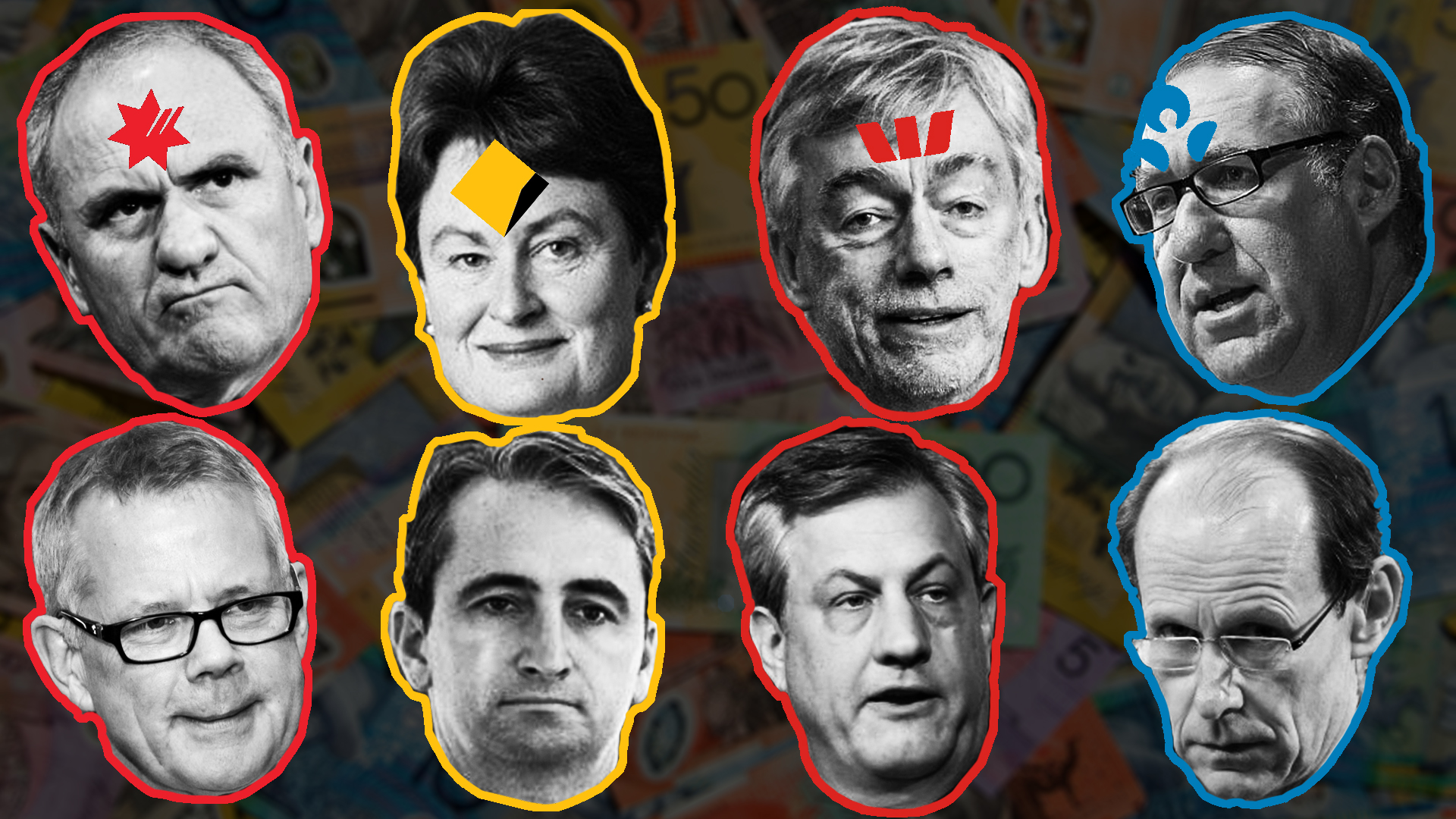Three interest rate cuts have failed to lift the economy. As have the Government’s $1080 tax breaks. Printing money is now a serious option. Quantitative Easing they call it, or “QE”. Michael West reports.
The Government lurched into battle with the banks today over their refusal to pass on interest cuts to their customers. Meanwhile, a putative QE program, essentially an exercise in printing money, will allow the banks, not the Government, to decide where stimulus money is spent. They are further privatising the management of Australia’s economy while furnishing another source of profits for the Big Four banks.
The new game in town
While the banks’ compliance department are gearing up for the the ACCC’s peek into their affairs, their bond trading rooms are busy devising their strategies for QE. APRA will have to look at its prudentials and draft some rules to free up the banks to switch assets from bonds to cash to loans.
Meanwhile the RBA will be wargaming its models to work out how they want it to come together to reshape the yield curve (albeit long-term rates have jumped sharply over the last few days). And everyone is second guessing how the others will play the new game in town: QE with Australian characteristics.
This is the way the Government would like QE to work:
The Reserve Bank gives cash to the banks by buying bonds from the banks. This drives down interest rates in the bond market. The government hopes the banks will lend the money the banks receive. The competition to make new loans drops interest rates further. The new money stimulates the economy. Another desired effect is to drop the currency and fire up exports.
Here is how the Reserve Bank would like QE to work: the increase in the money supply ignites inflation, bringing it closer to the RBA’s inflation target. A stimulated economy increases employment and wages. After all, the RBA’s charter says it should do what “best contributes to the economic prosperity and welfare of the people of Australia”.
Here is how the banks would like QE to work: they sell bonds to the RBA at a tidy profit. They use the funds they receive as they think best.
So it is that Treasurer Josh Frydenberg has a problem. Even though they are protected by the RBA’s bail-out facility – underpinned, that is, by taxpayers – the banks are not doing what they are told. For a start, they declined to pass on the recent rate cuts in full, preferring to commandeer a larger profit for themselves, despite being harangued by the Prime Minister and the Treasurer.
Here is the problem. Growth has crashed through its post-GFC support levels. Check out the right-hand-side of this graph.
So the question is, what will the banks do with the money they get from the RBA? Will they lend it? To whom will they lend it? At what risk and for what purpose?
Australia’s top bankers are in a special position. The Government has privatised the decision-making about where the money goes.
Will the banks lend it to Adani? Will they write more real estate loans to stimulate a property market already characterised by record household debt? Will they prefer negative geared investors? Will they be daring and lend it to small business?
This graph shows people are reluctant to spend. It shows business pessimism. It shows what the Government planned, or wanted, to happen, and what did happen. Why?
NAB said on October 8, “At present, retail and wholesale … are weakest – a reflection of conditions in the household sector”.
Westpac’s answered on October 9: “Consumers are looking behind the reason for the rate cut and … getting nervous.”
The banks are not going to lend to Newstart recipients but the irony is that if the Government were to raise the Newstart allowance, they would be assured the money would be spent straight away and the economy thereby stimulated.
Meanwhile, in two weeks, three of the four big banks will announce their profit results for 2019; and how much government money they will hand out as franking credits – another tool of economic management which has been privatised.
Under the franking credits regime, the banks executives must decide three things: will they hand out franking credits on top of their dividends, how many franking credits they will hand out – and when? This is money the banks paid to the government. But it’s money the government cannot spend. It is a public benefit which goes mostly to wealthier tax-preferred shareholders.
The decision making on how much and when has been privatised, devolved to the banks. Same deal for QE, privatised decision-making for Australia’s economic management. If QE proceeds, there will be a deluge of funds cascading through the hands of the banks. Goodness knows where it will end up.
Privatising decision-making: the track record
Privatisation in Australia has clearly failed. Nosebleed energy prices, road tolls rising at twice the clip of inflation, high airport charges and peculiar decisions to privatise monopolies such as the NSW Land Titles Office. Now they are even poised to privatise the visa system.
Nonetheless, the Government persists with its privatisation fetish, even though it is clear that public interest has lost to private interests over three decades. Where have we ended up? As CEDA (the Committee for Economic Development of Australia) puts it in a recent paper: privatised decision-making without accountability.
The Government has proven a fabulous source of profits for the banks over the years. In 2009, when the wholesale funding guarantee was deployed to prop up the banks during the GFC, Macquarie Bank pinned its ears back and raised $25 billion in cheap Commonwealth-guaranteed rates on world bond markets.
It then ploughed that money into $33 billion worth of junk bonds, clipping the ticket on the difference between government rates and far cheaper corporate debt. The result: the cunning MacBankers locked in years of profits, backed by Australian taxpayers.
Perhaps the unintended consequences of QE will be of a similar dimension. Privatising decision-making is not the same as privatising assets, but they are analogous, they stem from the same neo-liberal philosophy that the private sector does a better job than the public sector; that wealth will trickle down.
Perhaps the RBA will not have to resort to QE if the Government takes on greater responsibility for the nation’s welfare … rather than outsourcing it.
Sources: CEDA: “Privatisation – a Review of the Australian Experience” #SON2019 RBA: “Privatisation in Australia” December 1997 https://www.michaelwest.com.au/why-should-taxpayers-guarantee-macquaries-junk-bond-binge/
Public support is vital so this website can continue to fund investigations and publish stories which speak truth to power. Please subscribe for the free newsletter, share stories on social media and, if you can afford it, tip in $5 a month.
Michael West established Michael West Media in 2016 to focus on journalism of high public interest, particularly the rising power of corporations over democracy. West was formerly a journalist and editor with Fairfax newspapers, a columnist for News Corp and even, once, a stockbroker.

